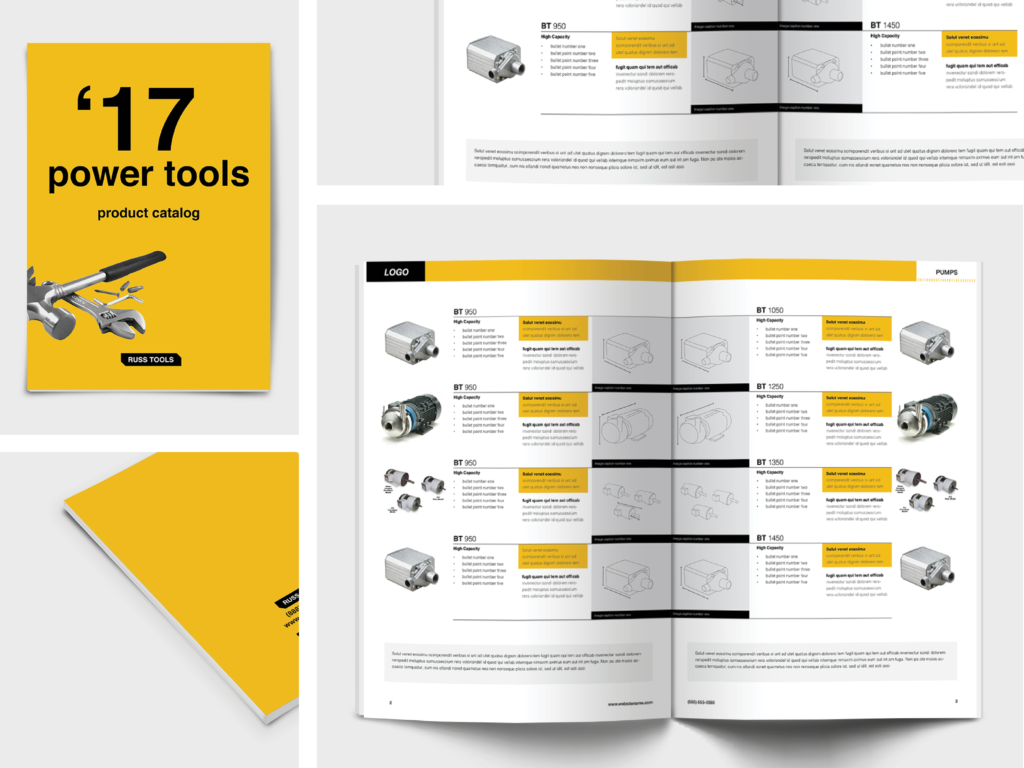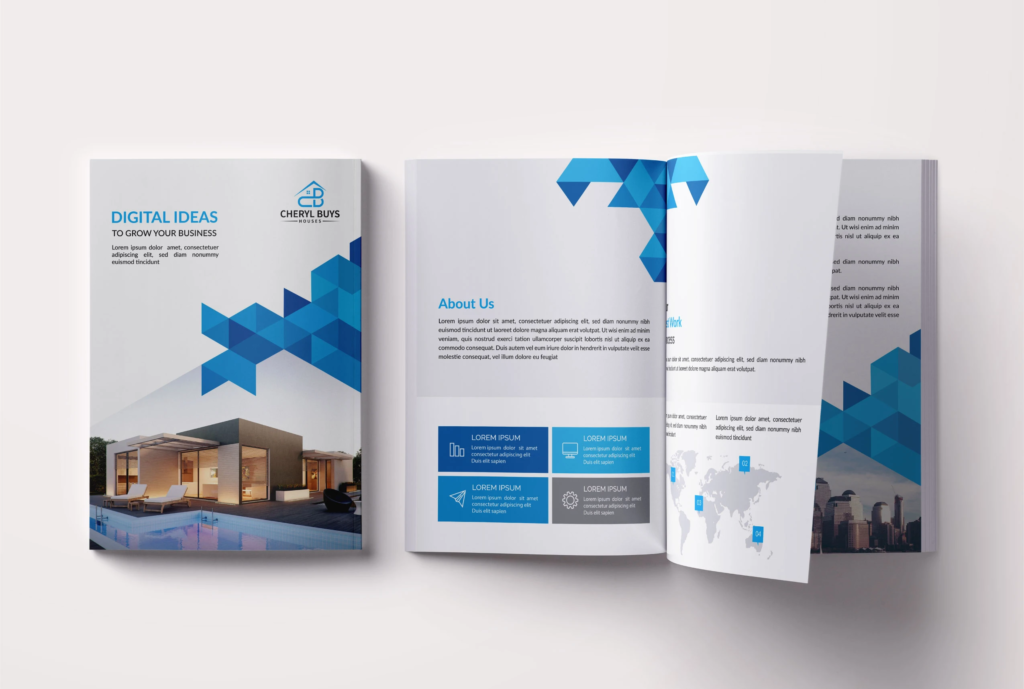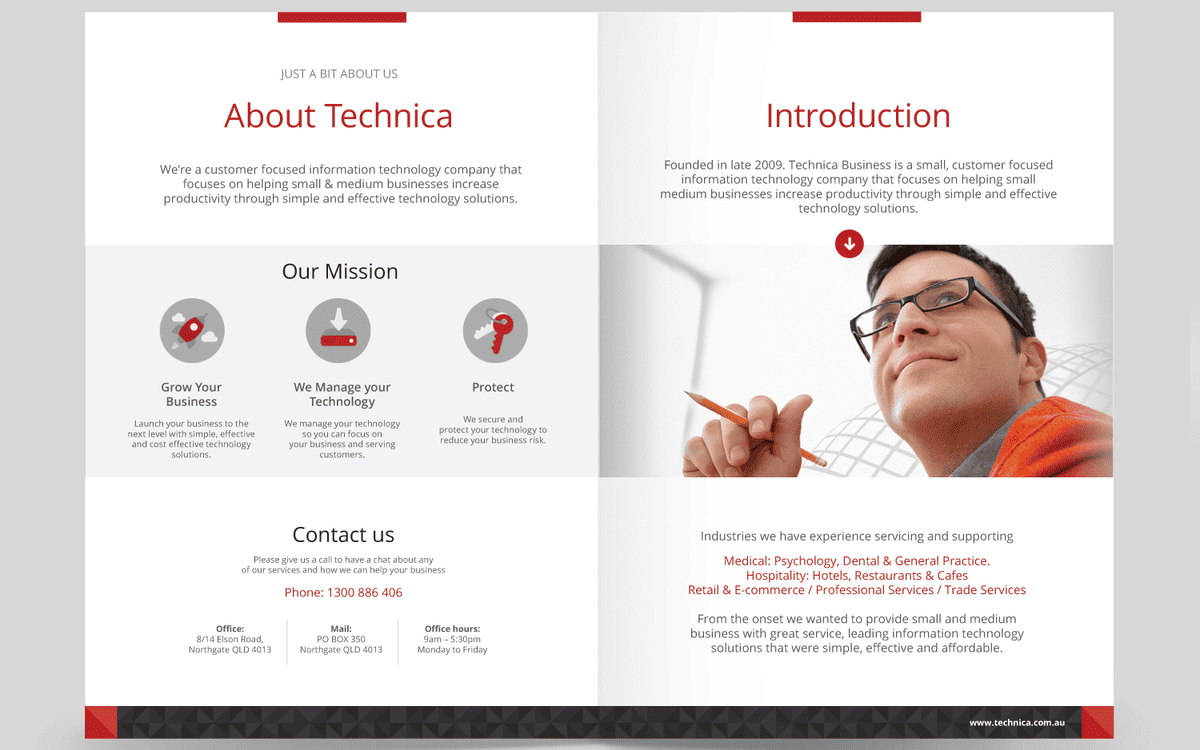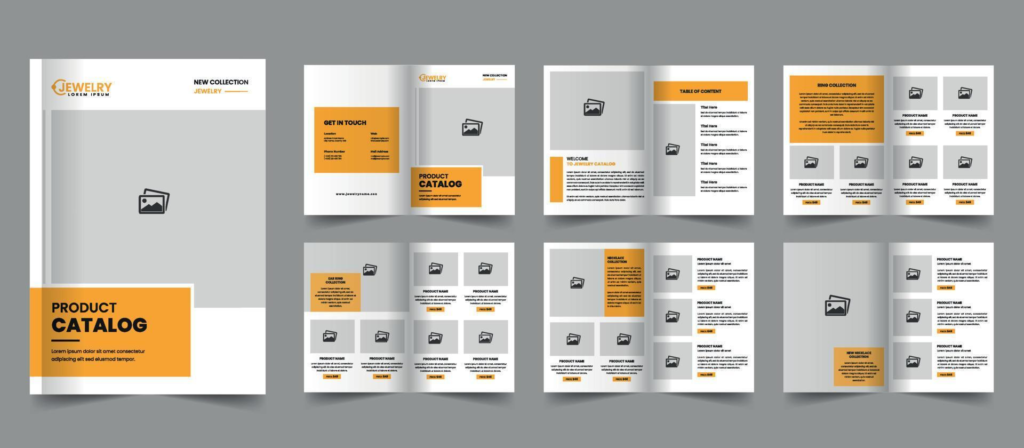Last Updated on March 14, 2025 by Packoi Team
This is necessary because, according to reports, manufacturers put brand awareness as their top marketing goal. A catalog is among the most effective tools to help product marketing managers and their teams promote the business.
If your manufacturing catalog requires an upgrade to assist the efforts of your marketing team, keep reading.
In this article, you’ll learn what it means to create an effective print catalog for the manufacturing industry. This won’t focus on digital catalogs. But there will be tips that can still apply if you decide to create a digital catalog version for your business.

10 Important Details to Include in Your Manufacturing Catalog
A manufacturing product catalog is a powerful tool to promote a business.
7 out of 10 manufacturers consider content marketing as part of their business processes. This means manufacturing companies are investing a huge part of their marketing budget in digital and printed content like catalogs.
Through printing a product catalog, a manufacturing company contains valuable information about the company and the products that it sells.
But unlike other catalogs, the information isn’t focused on the product details alone.
Product catalogs for manufacturing businesses have to show the production process that they use to create their products. Not only that, the delivery details will have to be mentioned to complete the information required by the client to push through with an order.

This is an important distinction that you should keep in mind as you create a manufacturing product catalog.
To ensure you won’t miss any of the essential elements of a manufacturing catalog design, take a look at the 10 details you shouldn’t miss.
1. Company and Brand Story
A typical manufacturing product catalog starts with an overview of the company. You don’t have to give all the details and a complete history of the business. But you have to make the customers aware of specific parts of your history as a way to establish your expertise.
They have to know how many years you’ve been operating, the products that you’ve created, and other impressive feats that your business is known for.
You can also add the mission and vision of your company to the product catalog. This will highlight the core values of your business. It’ll be useful for attracting clients who are particular about the companies that they partner with.
Of course, you shouldn’t skip your brand story. It should also be mentioned in your catalog.
All these will need at least one page or spread.

2. Product Details
While the catalog will be about the manufacturing business as a whole, the focus should still be on the products that you offer. After all, this is the one that the client will buy from you. So you need to include the necessary elements to complete your product catalog.
Create a list of products that you sell. If necessary, organize them into categories. That way, the client can find the specific product that they’re interested in.
Like other product catalogs, you should provide every detail that will help the client choose what to buy. Product details like the name, variants, specifications, applications, and other relevant data should be provided.
Choose only the important features to highlight, specifically the product’s unique selling points. You don’t want to overload the client with information, lest they skip reading important details out of boredom.
3. Product Images
No matter how complete the product details are, it won’t make clients buy if they don’t have a visual of it. This is why your product catalog should be filled with high-quality images.
The products will have to be showcased in the best possible light so clients can appreciate them. You don’t have to limit yourself to product shots. You should also take photos of how you create them. Show the facility where your products are created.

This will increase the confidence of your clients and give them an idea of the quality of the product.
Find a balance between the images and the personalized content that you’ll include in the catalog. There are existing product catalog templates that you can use as your guide. Choose the one that reflects your brand image very well.
4. Product Data and Specifications
This is all about the technical stuff. In this part of the product catalog, you’ll be focusing on how the product is put together. What are the machines used to create them?
Take photos of the production line and mention compliance standards or certifications that you adhere to.
Once you’ve described these, you can now include all the product details and specifications. This includes the dimensions, weight, materials used, or other physical descriptions of the product.
All the information will allow the client to determine if the product you’re selling meets their unique requirements. If you can convince them that it does, they’re more likely to place an order for your products. This will increase your sales.
Ready to Get Custom Packaging for Your Business?
start with a low minimum order quantity
5. Customer Credentials
Product catalogs should include testimonials and reviews from satisfied clients. Choose the one that sings high praise for the quality and exceptional service that you provide.
You can also highlight projects that use your products. Showing the clients how your product is used will help them make a buying decision that favors you.
These customer credentials will give the readers of your product catalog the confidence to take the next step. It’ll increase their trust in your abilities to meet their needs.
Put these customer credentials towards the end of the product catalog, right before the call-to-action. The testimonials can influence their thoughts right before they see the instructions on how to buy the product.
6. Value-Added Services
If you offer services that complement the product that you’re selling, mention that in your product catalog as well. Get into all the details of how your service can make their product experience so much better. Highlight the product details that you know will benefit from the extra service.
Among the offers of value-added sellers are extended warranties, training, consultations, etc. Pick the ones that you know the client will need once they transact with you.
For instance, as a printing and packaging company, Packoi Printing also offers design services to our clients. This gives us a competitive advantage compared to other manufacturers.

7. Pricing Strategy
The price of your products is an important deciding factor for a client. This is why you have to clearly state every price. Don’t make the client call or email you for the price. It has to be indicated in your product catalogs—if possible, right beside the product.
If you offer custom-made products, it’s okay not to indicate the final price. But you have to provide your pricing strategy so your client can make near-accurate assumptions about how much their order would be.
Include any bulk order discounts so clients will feel encouraged to buy more. And if you have an international market, think about currencies and exchange rates as well. You have to specify your preferred currency.
Feel free to add disclaimers like prices are subject to change without prior notice or prices are subject to final negotiations. This will ensure that there won’t be any miscommunication between you and the client.
8. Ordering Process
Even if you’ve impressed the client with the content and images in your product catalog, it won’t matter if they don’t take the last step with you. So make sure you provide clear instructions on how to put in their order.
For digital catalogs, this may be easier to do because people can just click a link, and they’re off to process their order.

For physical product catalogs, you have to make them use your website, email, or phone to place their orders. This is okay as long as you have prepared a simple process for them to follow.
Don’t make them go back and forth because that might exasperate them and stop them from ordering. Design your product catalog to help you sell more.
9. Delivery Information
Another thing that you should clearly explain in your product catalog is the delivery process. Indicate if you offer international shipping or just local deliveries. This will give clients an idea of your market reach.
How long will the client have to wait before they get their order? Will the delivery cost be included in the price, or will the client shoulder the expenses?
You should also discuss if you have distributors in certain areas. This will give clients clues on how long they should wait to get their items delivered.
All these should be specified in your manufacturing product catalogs.
10. Contact Details
Toward the end of your product catalog, put your company’s contact details. This includes the phone number, email, and website information where clients can reach you if they have questions.

As much as possible, make it easy for your clients to get in touch with you. Providing more than one phone number is usually a good idea because it’ll give your clients options.
And for your emails, set it up so potential clients will get feedback immediately. Use a platform to automate and manage email responses and encourage clients to purchase from you.
2 Rules When Organizing Your Manufacturing Product Catalog
An important part of the product catalog creation process is the organization of the contents within. Don’t just put the product details at random. It has to be systematic and well-planned to ensure that readers will read your catalog from cover to cover.
Without people reading and seeing the product data in your catalog, how will they know what to buy? How will they understand your expertise?
You can’t convince them to trust you if they don’t look at your catalog in its entirety.
The good news is that you can make readers look at your catalog from cover to cover if you follow these two rules.
Follow How Customers Consume the Content

Start by understanding how people normally consume content. Their reading behavior will give you clues on what product catalog template to use.
Usually, customers don’t read the catalog immediately when they see it. They scan every page first to see if anything interests them. It’s not like in digital catalogs, where they can go to the search box and type the product data they want to see.
With a physical manufacturing catalog, they’ll do a quick scan of every page by focusing on the images and headlines. If something interests them, they stop on that page to look at the product details closely. Once they scan the whole catalog and deem it worthy of their time, they’ll start to read it word for word.
They don’t rush through it because they know they can put down the catalog and resume where they left off. In a digital catalog, most people won’t feel the need to go through the whole catalog.
When they read the catalog, they usually follow a pattern. Think of the letters Z or F. Readers scan the top part, go down diagonally, and then settle at the bottom of the page. Then they go back to look at things that interest them in detail.
Define Products Individually

Now that you know how to organize your product data, it’s time to make sure that you include all the product details that are relevant to the reader.
The key word here is “relevant” because you don’t have to include everything. Sometimes, when there are too many texts, the reader feels overwhelmed, and they end up not reading anything.
Choose only the data that gives the reader a clear idea of what they’re buying. These should contain information that’ll push them to make a buying decision in your favor.
Among the details needed are the product name, description, dimensions, variants, pricing, etc. The application and usage instructions are also necessary, but you can choose to add a QR code that’ll take the reader to another platform (e.g., a website). This will prevent the instructions from overwhelming the reader.
5 Tips to Make People Read Your Manufacturing Catalog
Ready to Get Custom Packaging for Your Business?
start with a low minimum order quantity
Keep the two rules in mind as you create your manufacturing product catalog because it can encourage people to read everything in it. It’s important to go through the product catalog creation process to ensure that you won’t miss important details.
Without the right information, product marketing managers and value-added sellers might have a hard time selling your product or your manufacturing services.
Remember, as a manufacturing company, you’re not just impressing them with your products. They have to trust you to be able to produce your order. They have to believe in your technical capabilities, so they’ll know that you can follow through with what you promised them.
Here are 5 tips to ensure that you’ll end up with an effective manufacturing catalog.
1. Create a Well-Designed Catalog
The visual element of product catalogs is crucial to making them readable. Remember, readers will scan it first before they read the details. Your images, layout, and graphic design are the keys to getting them interested in it.
Choose a product catalog template that’ll give a great first impression of your manufacturing business. Keep it clean and professional-looking. You want to make the potential client feel like they can trust you to deliver their order.

Use only images that reflect the environment in your manufacturing facility. Ideally, you want to show them real images of what goes on. How is the product assembled? What does your facility look like? Who are the people working in them?
Organize all the information so it is easy to follow and read. Use bullet points and recognizable headings.
2. Make It Functional
This refers to how easy it is to handle the product catalog. If you make it too big, heavy, or thick, it might deter potential clients from picking it up.
Make sure product catalogs are comfortable enough to handle and read. It should be something that people can read even if they’re standing.
Not only that, but product catalogs should make it easy to find products of interest. Make the table of contents and page numbers easy to read. If necessary, add an index to ensure that readers can find what they need immediately.
3. Understand the Reading Process
The 2 rules mentioned above explain the reading process for potential clients. They scan it first, and then they follow a pattern in reading (Z or F). In digital catalogs, the experience may be a bit different than in physical product catalogs.

Put special attention on the upper left and right-hand corners of the page. These are the first two areas that the eyes land on.
The headlines and images should also be visually attractive. It should catch the attention and interest of the readers.
When it comes to the font of the text, make it easy to read. Use the brand text to ensure familiarity. Highlight key phrases and features by putting them in a text bubble or making them bold.
4. Provide a Visual Pattern
The visual pattern of your product catalog refers to the consistency in the layout and format. For instance, all the headers will be positioned in the right-hand corner of the page. The product details are always to the left of the product photo, with the pricing underneath.
Make this consistent throughout the manufacturing catalog so readers will know where to look. When they turn the page, they know where to look for the information they want to read.
This also refers to the color, font, and text sizes. It’ll help people immediately recognize the prices, headings, product names, etc.
Check out product catalog examples to see how they use visual patterns. This will give you ideas to implement in your manufacturing catalog.
5. Catch Expectations

Since your clients are the ones reading the manufacturing catalog, it has to meet their expectations. So before you finalize your design, ask yourself: What do your clients expect from your product catalog?
Choose a product catalog template that appeals to their need for information. Do your research so you can understand the personal preferences of your ideal clients. You can even survey them to find out what they want to see.
Try to meet all the data requirements so they’ll be more encouraged to read everything in your catalog.
Conclusion
What’s great about having a digital catalog is that it can widen your reach. On the other hand, the printed manufacturing catalog leaves a more lasting impact on your clients.
Take advantage of both benefits so your business can grow significantly. Provide a digital copy of your catalog on the website. Then include your printed catalog as packaging inserts when you deliver orders to your clients.
Get in touch with your printing supplier to inquire if they have a product catalog template that you can use for both printed and digital versions of your catalog.
Let’s Work on Your Manufacturing Catalog. Packoi Printing Has a Vast Experience in Catalog Printing.
Having a well-designed manufacturing catalog can help you get more clients and strengthen existing business relationships. However, this powerful marketing tool will have to be approached strategically.
Not only that, but you have to partner with the right company that can provide you with product catalog examples that you can use for inspiration.
This is what Packoi Printing can help with. If you need a catalog design that can effectively promote your manufacturing company, we can guide you in finding the right product catalog template to use.
Contact us today so we can get started on your manufacturing catalog. We can discuss our printing costs, and we’ll send you a fair quotation in no time.




